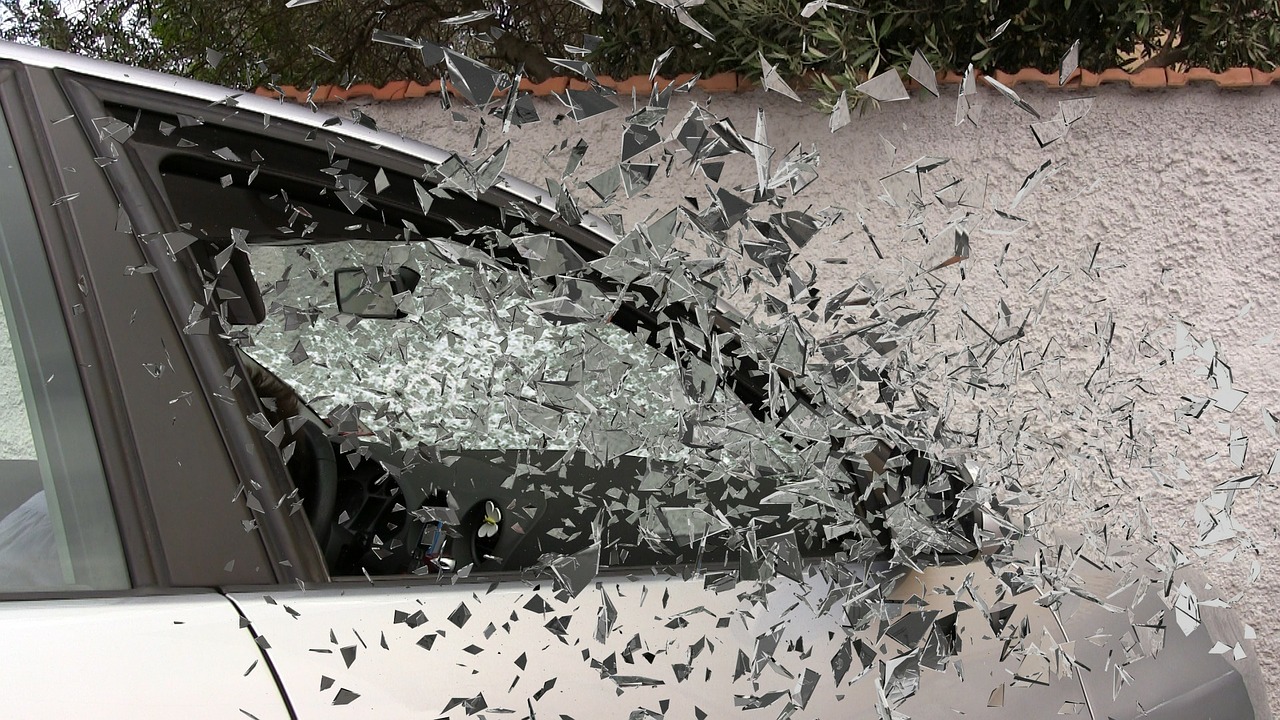In this month’s vlog, James Lambka goes over the best ways to stay safe while on a motorcycle by discussing the ten important points covered in an article by Wes Siler on motorcycle safety. These ten tips not only apply to motorcycle drivers, but are also useful to car drivers to help them better understand how motorcyclists look at the road and to hopefully prevent accidents.
A Car Turns Left In Front Of A Motorcyclist
One of the more common motorcycle accidents statistically, a driver either fails to see or incorrectly gauges the speed of an oncoming motorcyclist, and proceeds to turn left at intersection. The single most reliable way to avoid this type of accident is to always remember that regardless of right of way or any other rule of the road, there is no point holding the moral high ground after being a collision with a left turning car.
In practically every situation, it is the motorcyclist who is in the best position to keep themselves safe. It is also important to remember that in any injury case involving a motorcyclist, the burden of proof rests, even if unfairly, on the motorcyclist simply by virtue of them being on a motorcycle. Keep a hand on the brake and always expect a driver to do what they shouldn’t. Under no circumstances should a cyclist “lay their bike down” in such a situation. The motorcyclist’s best chance of survival lies in shedding as much speed as possible before the collision, and doing that requires an upright bike and both brakes.
Hitting Gravel On A Blind Corner
Usually encountered by cornering, the front wheel meets gravel or sand or leaves or whatever the case may be at an appropriate speed, and suddenly the bike is wiping out. The best way to avoid this type of accident once again rests squarely on the shoulders of the rider. A reasonable speed, and constant surveillance of the road ahead is the single best way to avoid this type of motorcycling hazard.
The “slow in, fast out” rule of thumb is firmly in play here. Enter the corner wide and at an easy pace to maximize visibility of the road ahead. Once coming out of the turn it is easy to regain any lost speed. If the cyclist can practice and master the advanced skill of tail braking, it can prove invaluable in front tire slide situation. Using the entirety of the road, regardless of lanes can also be an advantage providing its possible to do so safely.
Entering A Corner Too Fast
The best way to avoid such a situation is characteristically simple. Common sense dictates riding only as fast as you can see, and using visual cues like telephone poles to determine a road’s direction, even if it goes over a blind crest. Barring this, the best way to handle this sort of situation is to trust the machine and try to ride it out. The bike is usually more capable than a given rider, so focus of smoothly reducing speed and not doing anything that would cause the bike to lose traction, like punching the brakes or chopping the throttle.
This is another situation where being comfortable with tail braking can come in handy, allowing the rider to reduce speed while already in the turn.
Car Changes Into A Motorcyclist’s Lane
When riding at highway speeds it can be easy to forget just how easily a motorcycle, even a large one, fits in the blind spot of the average automobile driver. The fact of the matter is that if a blind spot can cover a car or small truck, it can surely engulf a motorcycle or even two. It is absolutely critical that riders always be aware of likely blind spots on a given vehicle.
Another tactic is to try to make contact with a driver to increase the likelihood that they see you. This assumes they’re actually looking, but it remains a good habit to get into.
Be aware of situations where lane changes are more likely to occur. If highway traffic is slowing and there is a lane where traffic is moving faster, people are going to want to be in that lane so you want to be elsewhere. Look for signs that lane changes are imminent; turn signals, wheels turning, and actions from the driver indicating they intend to switch lanes.
As is always the case, always maintain focus on the road and ride defensively.
Being Hit From Behind
If a motorcyclist has to stop for whatever reason, multi-lane traffic light, a road hazard, avoiding an animal, etc, they run a significant risk of being struck from behind by a motorist who is inattentive or otherwise unable to stop in time. When this occurs between two cars, it’s known as a fender bender and is common and minor occurrence. When it happens to motorcyclist it is potentially fatal situation. To avoid this, a motorcyclist should always be proactive. When at a traffic light, create a “crumple zone” by placing one or more cars between the rider and approaching vehicles. Should an incident occur, that car or those cars will provide a cushion against subsequent impacts.
If a crumple zone isn’t feasible, try to stop to the side as opposed to the center of a lane and rapidly tap your brake lever to flash your brake lights. Pay attention to what’s coming up behind you and keep your right hand on the throttle, so you can scoot to safety if it appears something is likely to plow into you.
Your Riding Buddies Are Idiots
We’ve all got that one friend. Some of us have decidedly more than one. When riding in a group, the poor judgment of one individual can have dire consequences for the other riders. If a rider stops suddenly and the rider behind is distracted or or not paying attention, they can cause a significant amount of injuries.
The best way to avoid this situation is simple: don’t ride single file. A staggered formation increases your field of vision, and moves bikes out of line with each other. In a staggered formation, one rider’s inattentiveness is less likely to result in a collision. Alternatively, you can just ride alone.
The Front Brake Has Locked Up
Something happens in front of a rider, they react urgently with a fistful of front brake lever, and suddenly the rider is on the ground watching their bike cartwheel away. The only way to avoid this situation is practice. Learn to use the front brake. The front brake is the most powerful component of the modern motorcycle and also the most difficult to master. It sounds counterintuitive, but the front brake can affect speed more dramatically even than the engine.
If the rider is new, or the bike is, spend time somewhere getting to know the machine. Find an empty parking lot or other large paved area, start from a set speed, say 30 mph, start braking at a predetermined point and practice until the stopping distance needed has been reduced as much as possible. Practice until the front wheel is on the verge of locking and the rear tire is on the edge of leaving the ground. Increase the set speed until the rider is confident in their ability to use the front brake to its maximum effectiveness.
Alternately, get a bike with ABS and remember it is there. In an emergency the front brake lever of an ABS equipped bike must be squeezed as hard as possible.
A Car Opened Its Door
A motorcyclist moves along the space provided between active but stopped traffic at a brisk but moderate pace. A car door opens suddenly, and disaster strikes. Such a scenario can have life altering, or even life ending ramifications for a motorcycle rider.
Simply put – never, ever, ever, ever ride between traffic and a row of parked cars. Car door that open suddenly are only the tip of that particular iceberg. Pedestrians, animals, children, cars that are pulling out, there are a myriad of reason bicyclists call the area within a car door’s width of parked cars “The Death Zone.” If despite all warnings, a cyclist should find themselves in an opening door situation, brake as hard as possible. If a collision is inevitable, any reduction in speed will make a critical difference.
It’s Slippery!
Wet stuff is coming from the sky. Cold, wet, slippery…stuff. Rain, snow, sleet, etc, can pose a significant danger to motorcyclists. In such conditions, painted road markers and manhole covers all have the potential to become slippery in inclement weather. Keep an eye out for the rainbows of oil slicks or spills. If it hasn’t rained recently, the first hour of rain or so is the most treacherous because of its tendency to life the oils from the pavement if there hasn’t been any rainfall in a while. Have a cup of coffee and wait for the downpour to wash all that junk down the gutter. It would appear to go without saying that maintaining the tires on the motorcycle is of paramount importance, but we’ll say it anyway: make sure your tires are in good repair. Other than that, slow down and watch for drivers who don’t understand wet conditions require more stopping and maneuvering distance.
A final point of wisdom comes from Ron Haslam about keeping revs up in wet conditions, the rationale being that should your rear wheel hydroplane you’ll be using a smaller amount of throttle opening, thus allowing you to regain traction much easier than if you’re riding at 30mph in 6th, at wide-open throttle.
The Most Common Bike Accident
According to the 1981 Hurt Report—the largest study ever conducted on motorcycle accident causation—alcohol is a factor in 50 percent of all bike wrecks.
The best way to avoid it:
Don’t drink and ride.
Ever.
Period.



0 Comments